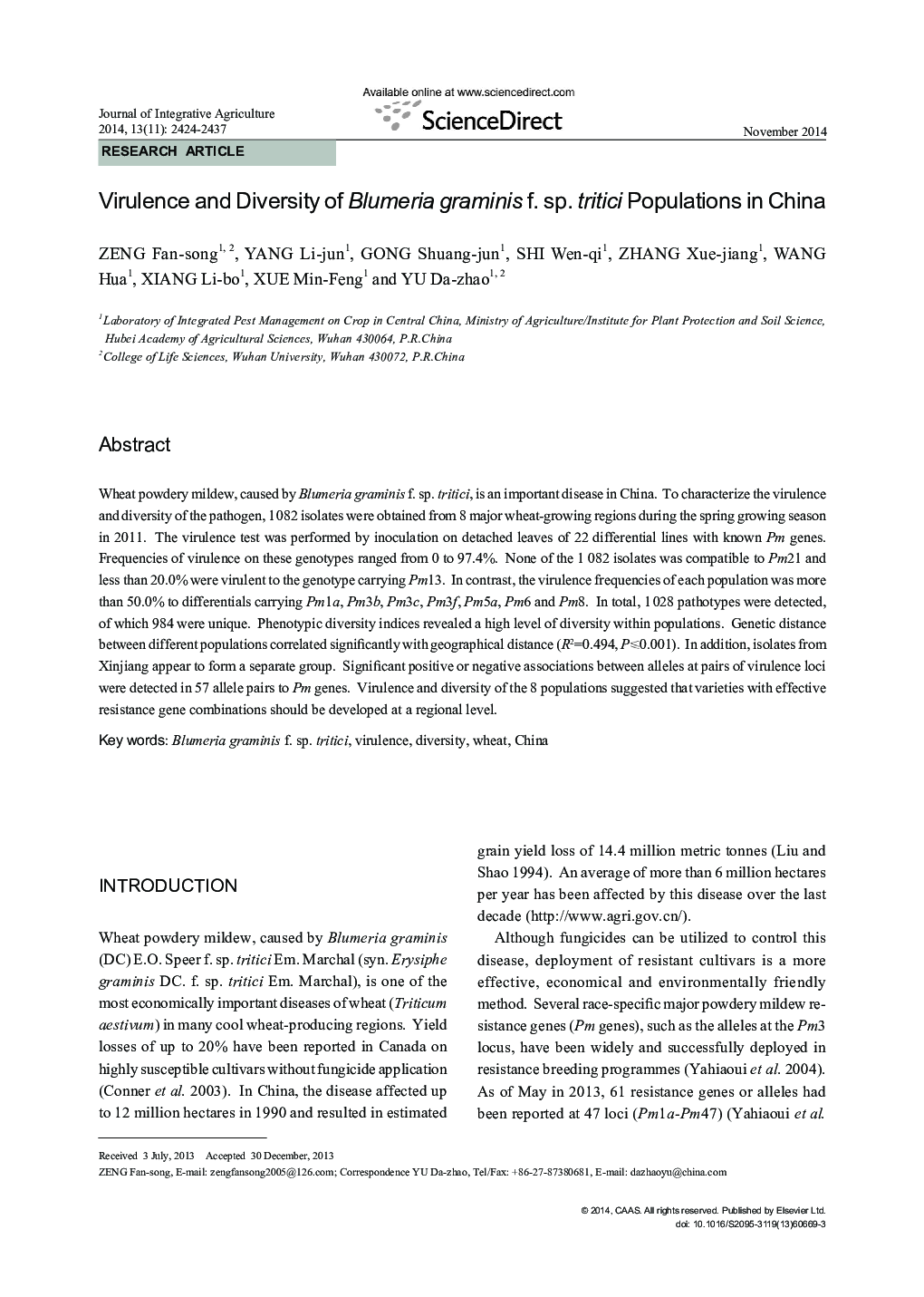| Article ID | Journal | Published Year | Pages | File Type |
|---|---|---|---|---|
| 4494438 | Journal of Integrative Agriculture | 2014 | 14 Pages |
Wheat powdery mildew, caused by Blumeria graminis f. sp. tritici, is an important disease in China. To characterize the virulence and diversity of the pathogen, 1082 isolates were obtained from 8 major wheat-growing regions during the spring growing season in 2011. The virulence test was performed by inoculation on detached leaves of 22 differential lines with known Pm genes. Frequencies of virulence on these genotypes ranged from 0 to 97.4%. None of the 1082 isolates was compatible to Pm21 and less than 20.0% were virulent to the genotype carrying Pm13. In contrast, the virulence frequencies of each population was more than 50.0% to differentials carrying Pm1a, Pm3b, Pm3c, Pm3f, Pm5a, Pm6 and Pm8. In total, 1028 pathotypes were detected, of which 984 were unique. Phenotypic diversity indices revealed a high level of diversity within populations. Genetic distance between different populations correlated significantly with geographical distance (Rb=0.494, P≤0.001). In addition, isolates from Xinjiang appear to form a separate group. Significant positive or negative associations between alleles at pairs of virulence loci were detected in 57 allele pairs to Pm genes. Virulence and diversity of the 8 populations suggested that varieties with effective resistance gene combinations should be developed at a regional level.
